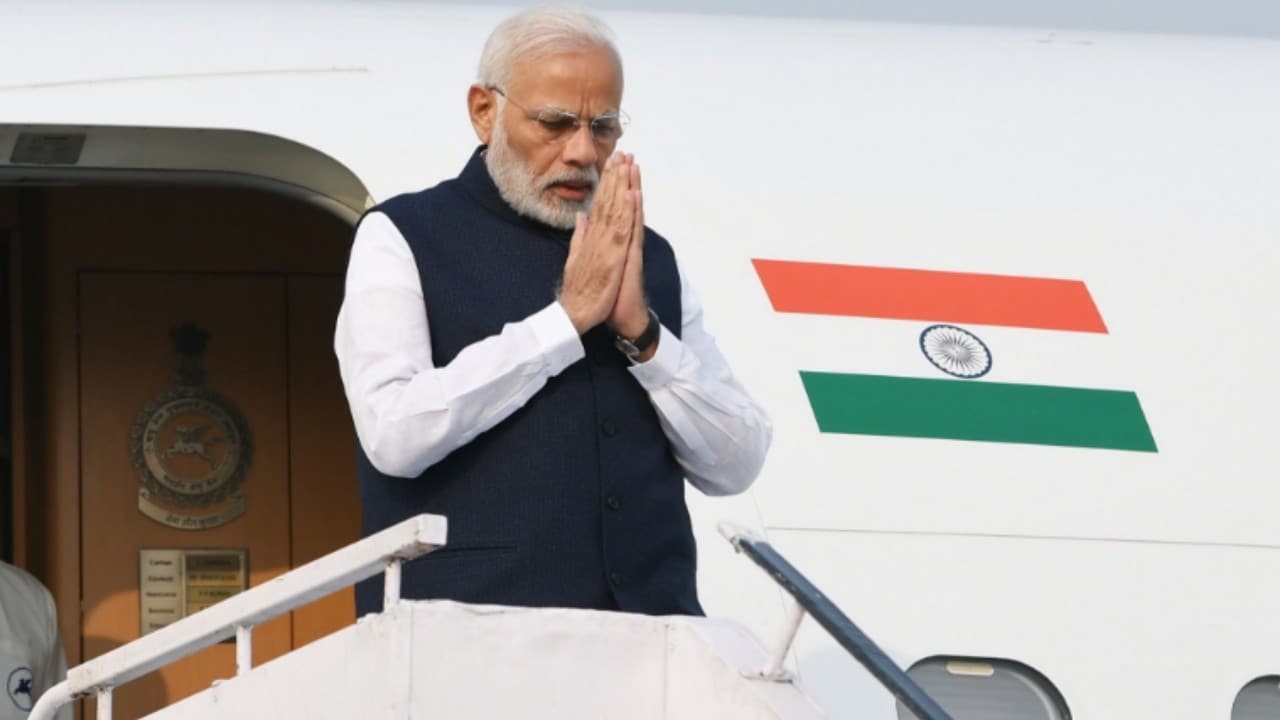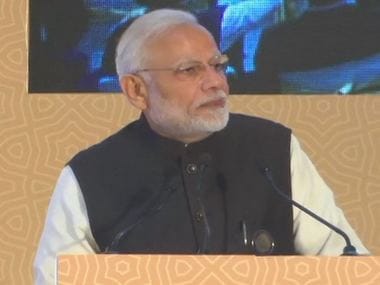
[ad_1]
The spate of meetings that is due to take place in Singapore during Prime Minister Narendra Modi’s visit is beginning to look more like a noodle soup than ever. The summit of the ten ASEAN members already underway will be followed by the East Asia Summit, which adds eight more world leaders. Then is the summit dealing with Regional Comprehensive Economic Partnership, after which most of these leaders will travel to Papua New Guinea for a meeting of the Asia Pacific Economic Cooperation (APEC) conference.

File photo of Prime Minister Narendra Modi. Reuters
In between all this activity will also be a meeting of the so-called Quad, a grouping that comprises Japan, Australia, the US and India that re-started fitfully in 2017. Apart from that Modi will also hold a dialogue with US vice president Mike Pence, with all of this in about three days. It’s certainly a trial for anyone. For Modi, it’s a particular challenge, given that many of the issues to be discussed are likely to impact general elections next year.
While all of these summits and meeting are important in their own respect, the attention back home will be more on the Modi-Pence meeting and flowing from that, the outcome of the Quad meet. With regard to the Modi-Pence meet, White House sources were quoted as saying that the focus would be on the bilateral and defence relationship, and specifically India’s role in the Asia Pacific, where the “sky was the limit” in terms of a possible role. India, however, will be more immediately interested in discussing the question of imposition of sanctions — touted as the biggest single-day action against Tehran — and a likely waiver. While India among other countries, has been given a temporary respite to continue imports, the issue has the potential to act as a spoiler in India-US relations.
India is the second largest importer of Iranian oil after China, sourcing more than 9 percent of its energy needs from Tehran. That’s not all. It’s going to be hard for India to find another buyer who offers such sweeteners as 60-day credit, free insurance and shipping. Most indignant Indians ask why Delhi cannot tell the US to chase itself round the block and continue trading with the Iranians. The answer to that is that is simple. More than half of global currency reserves and trade is still carried out in US dollars. This pivotal role has led inevitably to the ‘weaponisation’ of the dollar in terms of sanctions that have not been seen before. Reliance Petroleum has already stopped buying Iranian oil due in addition to its exposure to the US market. So in this instance, it is the Indian prime minister that is on a weak leg. High oil prices will not win elections.
The two leaders will take part in the Quad meeting where discussions are likely to focus on each nations’ priorities for the Asia Pacific. Officially the Quad has nothing to do with the East Asia Summit, but yet has everything to do with it. Though an entirely different grouping, three of four of the members of the Quad are Asian or Asia centric. All are part of the East Asia Summit, where Chinese premier Li Keqiang is to attend. Moscow recently announced that Russian president Vladimir Putin is to attend the Summit for the very first time. In other words, the East Asia Summit may have the potential to upstage Quad with its strong its anti-China overtones. As can be seen from the press briefing from the Ministry of External Affairs India is extremely reticent on the Quad, simply stating that the forum will discuss “peace and prosperity” issues.
Nothing could be further from the truth. The Quad is not a charitable organisation. In US hands, it is envisaged as a precursor to getting India on board to a virtual alliance against China. Note that the other two — Japan and Australia – are already alliance partners. New Delhi has however been backpedalling furiously on the Quad, even while using every forum to focus on its Asian ancestry and the vital importance of the ASEAN India economic relationship. The prime minister’s Keynote address at the Shangri La dialogue said it all, firmly including Russia and China as part of this vision of prosperity. If in US eyes, the “sky is the limit” for an Indian role in the Asia Pacific, New Delhi is willing to go the extra mile for connectivity and trade, but not buying into any strong anti-China platform — at least for the moment. Moreover, Pence’s recent and unprecedented speech lambasting China for aggression and interference in the US elections will hardly help. New Delhi will not play along, and that could be Modi’s strength and bargaining position.
Arising from the Quad, and its strong emphasis on keeping sea lanes open and the inter-operability that entails is the issue of the defence relationship between India and the US. It’s as well to remember that the Two plus Two dialogue earlier this year also focussed almost exclusively on defence and inter-operability between Indian and US/Allied forces. Having elevated India to the level of a Major Defence Partner, and tweaked its laws to allow transfer of technology, Washington is now waiting for the big bucks. The Indian Armed Forces are all due to do some major buys in the future, with the biggest is the 110 MMRCA (Medium Multirole Combat Aircraft) for which two of the contenders are Boeing and Lockheed Martin.
The latter had dived headfirst into the Make in India programme, offering to make India the export hub for the $165 bn fighter market. On similar lines is the issue of the sale of Predator drones, and the recent decision by the State Department to loosen controls on drone and chip technology. The Trump administration’s plan for powering up the US economy hinges on the defence industry. Hence the sanctions on Russia, and the ensuing S-400 issue. India has indicated its decision to go ahead with the deal, but it still needs a waiver on sanctions. The White House did get such a waiver from Congress, even if packed with conditionalities. But the president shows no intention of exercising that waiver. On the surface, it’s a no-brainer.
Ashley Tellis, the ‘go to’ analyst on South Asia in Washington, suggests a ‘lucrative’ and ‘geostrategic offer’ to get Trump to change his mind. The MMRCA deal covers both requirements. But the reality is that further defence buys from the US will come up against the question of whether US platforms are compatible — both in operational and security terms — with India operating Russian air defence weapons, among others. Make no mistake. It’s Pence’s job to squeeze India into a decision on whether India will bid goodbye to Russia and buy American. That’s a hard decision to make when the Indian Army, in particular, is still so heavily dependant on Russian weapons.
At Singapore therefore, Modi has a gargantuan task. He has to be seen to be somewhat ambivalent on security issues and enthusiastic about the trade at all venues where China and Russia are present. At the Quad meeting, he has to focus on keeping the “free, open, inclusive” language at meetings, even while possibly giving a nod to ‘respect for international law’ even if it annoys Beijing. Alongside, India also has to bone up its lagging defence with the best technology available and do it quickly even as the Chinese military strengthens itself. And underlying the whole is a decision that going it alone – a kind of Non Alignment Plus Plus – is the best way for India to navigate the extremely tricky waters of the Indo-Pacific. It’s going to be quite a conversation.
[ad_2]Source link